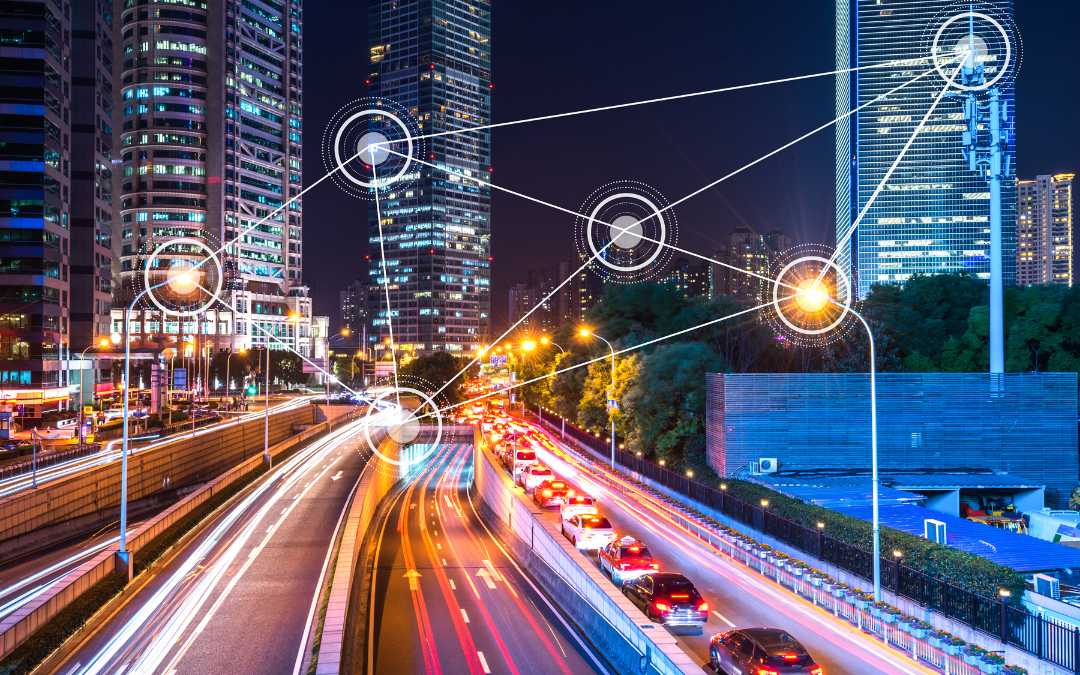In the ever-evolving landscape of urbanization, the concept of Smart Cities has emerged as a visionary approach to address the complex challenges of modern urban living. This article embarks on a journey to unravel the multifaceted realm of Smart Cities, exploring their definition, dissecting the benefits they bring, and delving into the transformative technologies underpinning this urban revolution.
1. Know About Smart Cities
The Essence of Smart Cities: At its core, a Smart City integrates cutting-edge technologies to enhance performance, well-being, and resource utilization. These cities leverage data and connectivity to optimize various aspects of urban life, ranging from transportation and energy management to healthcare and public services.
2. Key Components
Intelligent Infrastructure: Central to Smart Cities is intelligent infrastructure. This encompasses smart grids, connected transportation systems, and energy-efficient buildings that work synergistically to create a sustainable and interconnected urban environment.
Data-Driven Decision-Making: A hallmark of these cities is the emphasis on data-driven decision-making. Through the deployment of sensors and Internet of Things (IoT) devices, cities gather real-time information, enabling informed decisions for efficient resource allocation and improved services.
3. Advantages of Smart Cities
Enhanced Efficiency and Sustainability: The integration of smart technologies leads to enhanced efficiency in resource management, reducing waste and environmental impact. Smart Cities strive to create a sustainable ecosystem by optimizing energy usage and promoting eco-friendly practices.
Improved Quality of Life: Prioritizing citizen well-being, Smart Cities offer improved quality of life. From smart healthcare systems to efficient public services, residents experience a heightened standard of living. Connectivity and accessibility become foundational, fostering a sense of community and inclusivity.
Economic Opportunities: Beyond improved living conditions, Smart Cities generate economic opportunities. The integration of technology attracts businesses, stimulates innovation, and creates a conducive environment for job growth and entrepreneurship.
4. Technologies Powering Smart Cities
Internet of Things (IoT): At the heart of Smart Cities lies the Internet of Things (IoT). IoT facilitates the connection of devices and systems to gather and analyze data. From smart traffic lights optimizing traffic flow to waste management systems streamlining operations, IoT enhances efficiency and responsiveness in urban operations.
Artificial Intelligence (AI): Artificial Intelligence (AI) plays a pivotal role in making sense of the vast amount of data collected in Smart Cities. Machine learning algorithms enable predictive analysis, optimizing services, and anticipating the needs of the city’s inhabitants. AI-driven technologies contribute to the adaptive and responsive nature of Smart world.
5. Challenges and Considerations
Privacy and Security Concerns: The influx of data in Smart Cities raises legitimate concerns regarding privacy and security. Striking a delicate balance between utilizing data for improvement and safeguarding individual privacy is a crucial challenge that urban planners and technologists must navigate.
Inclusive Implementation: Ensuring that the benefits of Smart Cities are accessible to all residents is imperative. Inclusive implementation addresses potential disparities, ensuring that technological advancements contribute to a better quality of life for the entire population. Overcoming digital divides and considering the diverse needs of the community are essential aspects of this challenge.
6. Global Initiatives and Success Stories
Global Adoption: The phenomenon of Smart Cities is a global one, with numerous cities around the world embracing this transformative approach. Cities like Singapore, Barcelona, and Dubai serve as beacons of successful implementation, each showcasing unique applications of smart technologies.
Success Stories: Examining success stories provides valuable insights for aspiring Smart Cities. For instance, Song do in South Korea has integrated smart technologies to create an eco-friendly and highly efficient urban center. These success stories serve as blueprints for other cities embarking on their smart journey, offering lessons learned and best practices.
7. Future Trends and Innovations
Integration of 5G Technology: The advent of 5G technology is set to propel Smart Cities further into the future. The high-speed, low-latency capabilities of 5G will enhance connectivity and enable more seamless integration of IoT devices, paving the way for unprecedented innovation in urban infrastructure.
Sustainable Urban Planning: Future Smart Cities will increasingly focus on sustainable urban planning, incorporating green spaces, renewable energy sources, and eco-friendly transportation options. The aim is not only technological advancement but also creating cities that prioritize environmental stewardship and resilience.
The Future of Urban Living
In conclusion, Smart Cities represent a dynamic shift in the paradigm of urban living, promising a harmonious blend of technology, sustainability, and an improved quality of life. As we navigate the challenges and embrace the opportunities presented by these intelligent urban ecosystems, it becomes evident that Smart Cities are not just a technological evolution but a transformative force shaping the cities of tomorrow. The journey towards smarter urban living is ongoing, and as technology continues to advance, so too will the potential for creating more connected, efficient, and livable cities. The future of urban living is undeniably intertwined with the evolution of Smart Cities, offering a blueprint for a more sustainable, inclusive, and technologically empowered world.

